Charger TrustFire TR-008
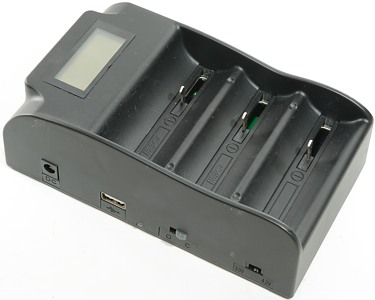
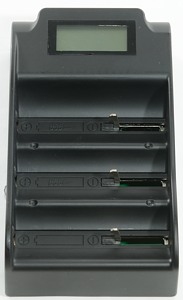
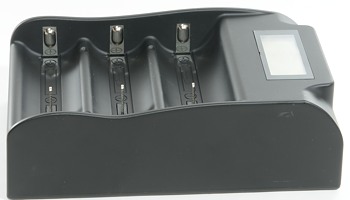
The TrustFire brand covers many different flashlights, batteries and chargers, but usual the quality is a bit low. Here I am testing a charger that, on paper, looks interesting, because it can handle large NiMH and LiIon batteries. With LiIon batteries it is possible to select either 4.2 volt or 3.6 volt as charge voltage. In addition to the charge function, it also has USB power output.
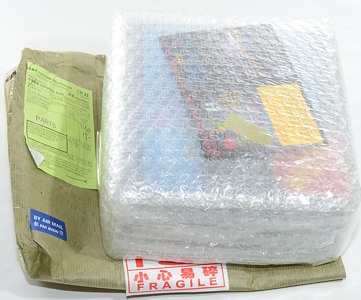
I got the charger from Hong Kong in a envelope.
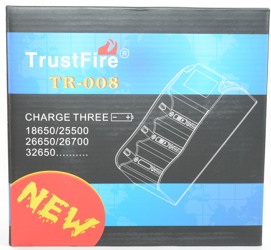

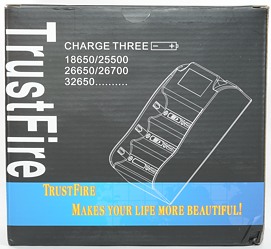

The cardboard box did survive the shipping. The box it specifies some battery sizes, but nothing about battery chemistry. I will return to that shortly.
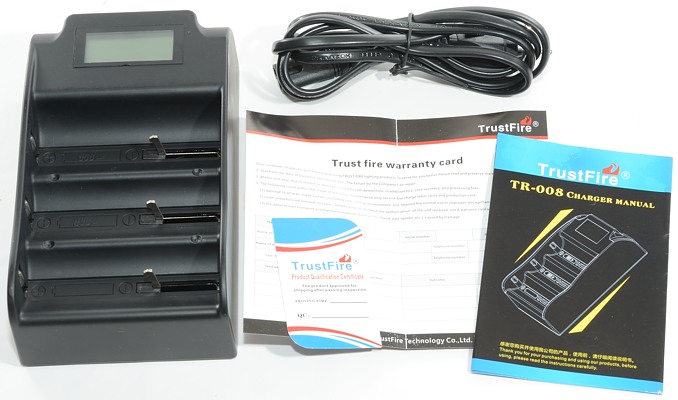
The box contained the charger, mains cable, instruction sheet in English and probably Chinese and warranty card.
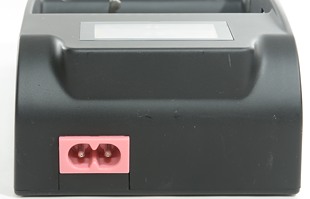
The charger has directly mains input with universal voltage (110-240V 50-60Hz). I did my tests at 230VAC.
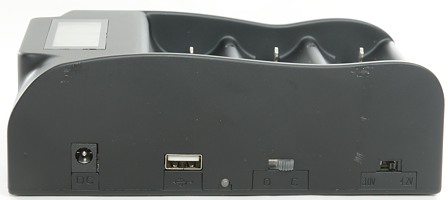
Looking at the side of the charger, there are a lot of stuff:
DC input 12V - 30V, I have not tested this socket.
USB output.
Blue led, on when usb socket has power.
O-C switch, O position turns on usb power. C position turns on charger.
3.0V - 4.2V switch, this is used to select between IFR cells (3.0V position) and ICR/IMR cells (4.2V position).
Two slots are used for usb output, the 3. slot is only for charging and can charge while usb output is active.
Power for usb output is always drawn from the batteries.
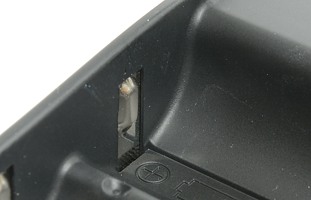
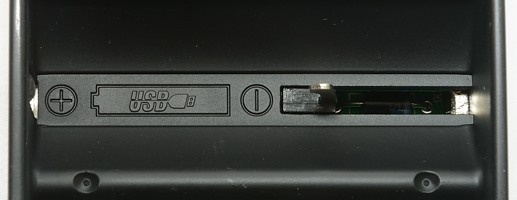

The charge slots can handle from 50mm to 75mm long cells, including flat top cells. The slider has a plastic foot, this makes the slider very smooth. I like the marking for the usb output slots.
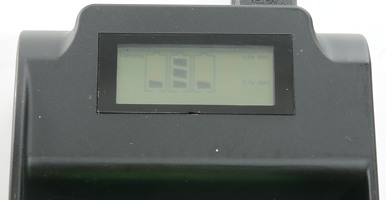
The display has 3 battery symbols and some text:
It shows 1.2V BAT, 3.0V BAT, 3.7V BAT, Standby, Charging. When powered on it does also show a TrustFire logo.
When the 3 blocks in the battery symbol is steady, the battery is full (The "Charging" text is still on).
Usb output is not included in the display, it will just show "Standby".
There is no background light.
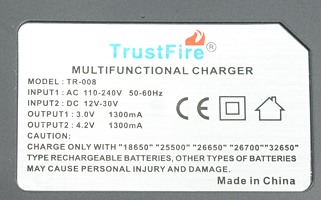
The missing battery chemistry and the battery voltages is not very consistent.
A IFR battery has 3.2V, but batteries are often marked 3.0V, to make people believe that they are direct replacement for CR123 batteries (Read more here). The charge voltage for these batteries is 3.6 volt. The ICR/IMR batteries are 3.6V/3.7V and needs a 4.2 volt charger.
On the TR-008, the marking for ICR/IMR varies a bit, display says 3.7V, but switch says 4.2V.
The manual says TR-008 can charge NiMH, but none of the markings on the box or charger confirms this. The measurements below, shows that there might be a reason for this.


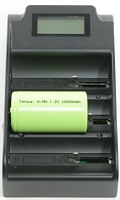
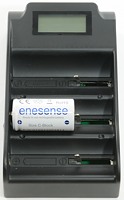
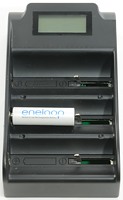
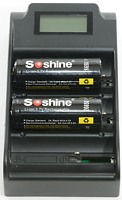
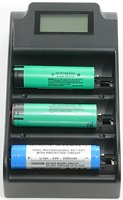
The charger can easily handle 70 mm long batteries, inclusive flat top cells.
Measurements
- When not connected to power it will discharges with up to 0.6mA, when usb is on the usb slot will discharge with 4mA.
- When power is connected with a full battery, the charger will discharge with 0.5mA (All slots with LiIon).
- When power is connected with a full battery, the charger will discharge with 0.2mA (All slots with NiMH).
- Below 0.8 volt the charger does not detect a battery and does not charge.
- Between 0.8 and 1.1 volt it chargers with 20mA current.
- Above 1.1 volt it will ramp up to full current of about 0.8A for NiMH.
- Above 1.6 volt is will switch to LiIon charging, type depending on switch setting.
- Above 3.2 volt is will charge LiIon with full current of about 1A.
- It will not restart charging, if the voltage drops.
- It will restart charging on reinsertion of the battery or power cycling.
- The channels on the charger are independent, i.e. there are small differences between them.
LiIon at 4.2V (ICR/IMR)
%20%231.png)
This charger uses a pulsing constant current and does not limit the charge voltage to 4.2 volt, this is not very good. I wonder why the charger pauses a couple of times during charge.
%20%232.png)
%20%233.png)
The two other channels work exactly the same way.
%20%231.png)
%20%231.png)
Battery size will change charge time (Not surprisingly).
%20%231.png)
My old IMR cell, does get the worst out of the charger, charge voltage hits 4.4 volt!
.png)
A full load of batteries does not change anything.
The maximum temperature is 41°C on the battery.

M1: 46,4°C, M2: 45,7°C, M3: 41,3°C, HS1: 76,5°C
It looks like the heat generating electronic is below the first two cells.

The charger uses duty cycle to vary the charging speed, here is the slow charging.
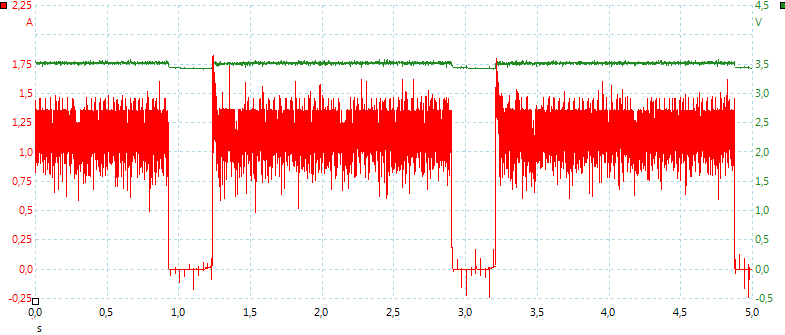
And here is the full speed charging.
LiIon at 3.6V (IFC)
%20%231.png)
I did only one 3.6 volt LiIon test. It is using the same electronic as the 4.2 volt charger, it just turns off earlier. Notice that the charger is running with low current, until the voltage reaches 3.2 volt.
NiMH
%20%231.png)
First test was with a 2000mAh eneloop cell. The charger stopped after about 375mAh.
This is useless.
.png)
Maybe some larger batteries will work better, here I have tested with some old 9000mAh D cell (They works perfectly and has full capacity). The charger charges very slowly, until the cells reaches 1.1 volt, then it turns the full current on. This time I get 1700mAh.
The short charging time does not heat the batteries much and because the batteries are only partial charged, there is no terminating increase in temperature.
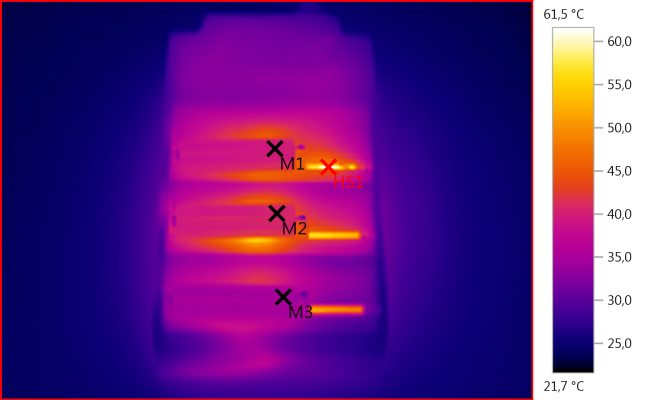
M1: 39,7°C, M2: 40,4°C, M3: 34,7°C, HS1: 61,5°C
This test was done with 3 eneloop. The charger does not get as hot, but that might be because it stops very early.
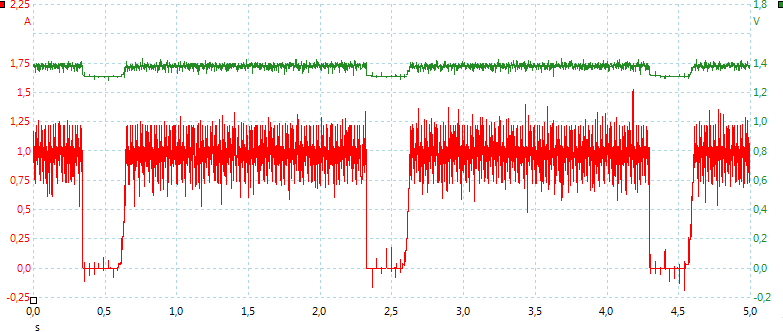
The charger uses the same pulsing when charging NiMH.
USB output
- The two batteries are in parallel.
- USB output does not turn off when battery is empty.
- USB output does not turn off when overloaded, output voltage will just decrease.
- USB uutput is coded as USB charger (DCP).
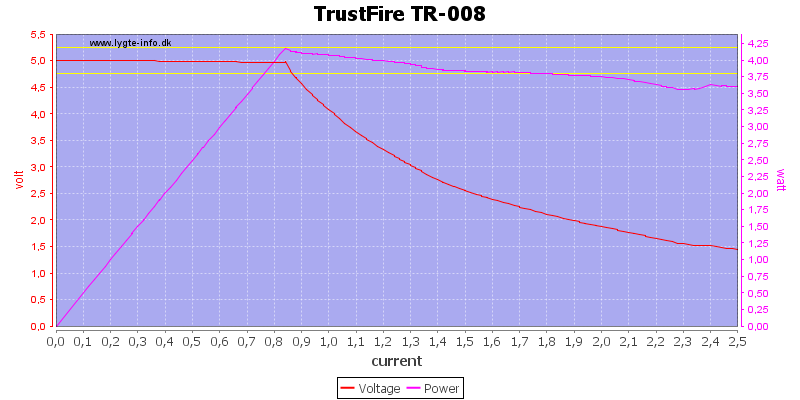
With one battery the TR-008 can output 0.8A
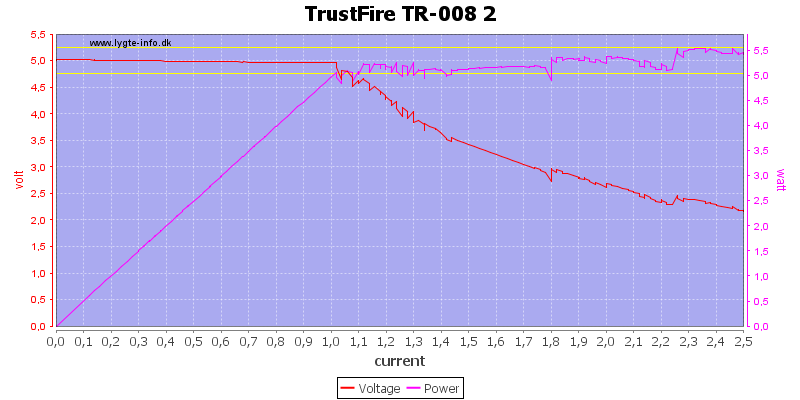
Using two batteries increases the current to 1A.
.png)
With 0.5A load the output is stable for about 2½ hour. The efficiency is not that good.
This test was done with an unprotected battery and I stopped manually, when the battery was empty.
.png)
With 0.7A load the efficiency drops and it can only maintain stable voltage for about 40 minutes.
This curves shows that the under voltage protection on the AmpMax battery works perfectly, it disconnects the battery at 2.5 volt.
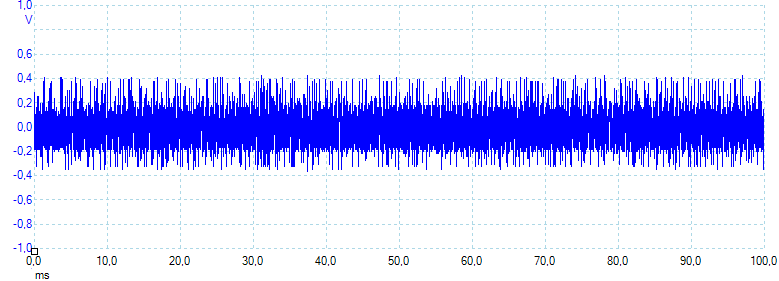
With two batteries and 7 ohm load it has about 146mV rms noise.

Reducing the load to 10 ohm and with only one battery, the noise is 113 mV.
The charger passes the 2500 volt test, but failed the 5000 volt test, i.e. it is not completely safe in 230 volt countries.
Conclusion
The charger does not use the correct charging algorithm for LiIon and charges with to high voltage, but does not overcharge the batteries. It is not very good, but can be used.
The charger is not useable for NiMH and it looks like TrustFire do know it, but forgot to change the manual.
The support for large LiIon batteries and for IFR LiIon batteries, means that the charger can be useful, even with all its faults.
I am not impressed with the usb output, it is missing a low voltage disconnect.
Notes
Here is an explanation on how I did the above charge curves: How do I test a charger
Read more about how I test USB power supplies and chargers























%20%231.png)
%20%232.png)
%20%233.png)
%20%231.png)
%20%231.png)
%20%231.png)
.png)



%20%231.png)
%20%231.png)
.png)




.png)
.png)

